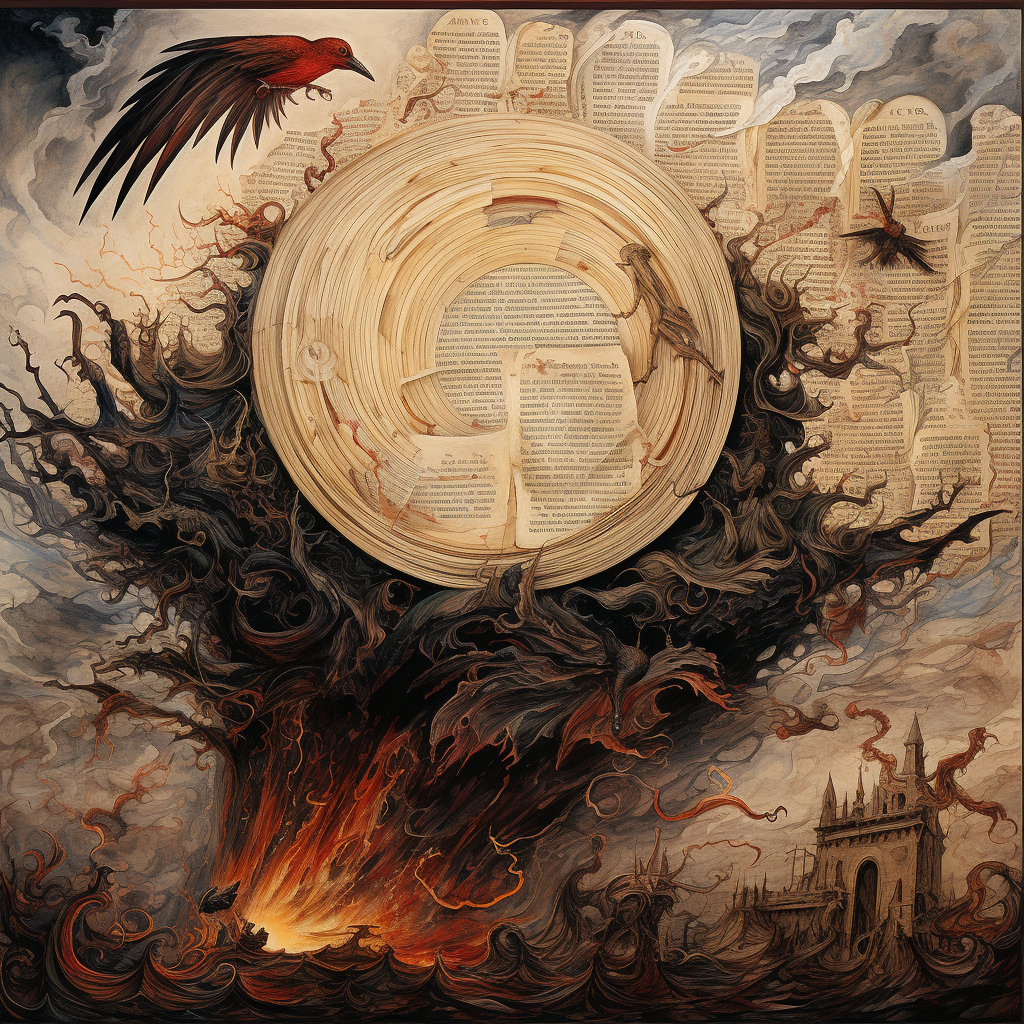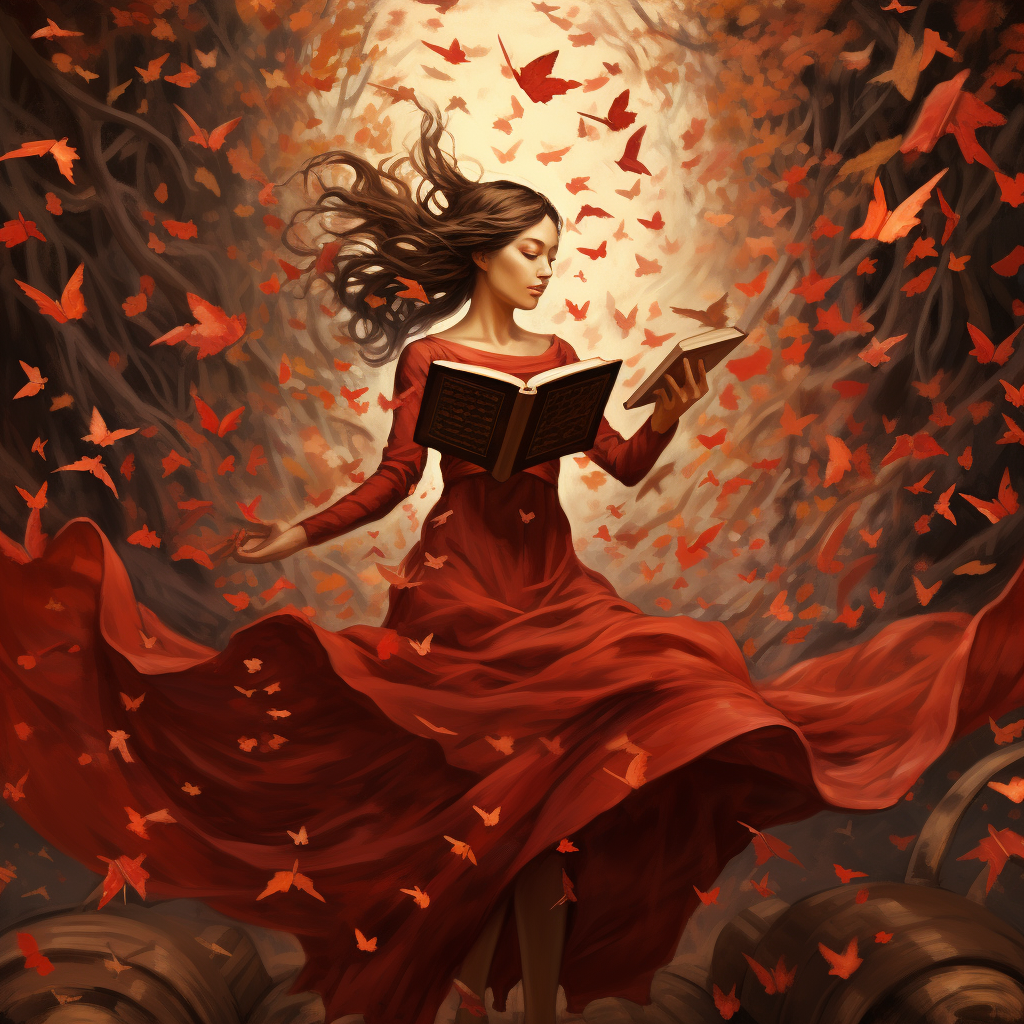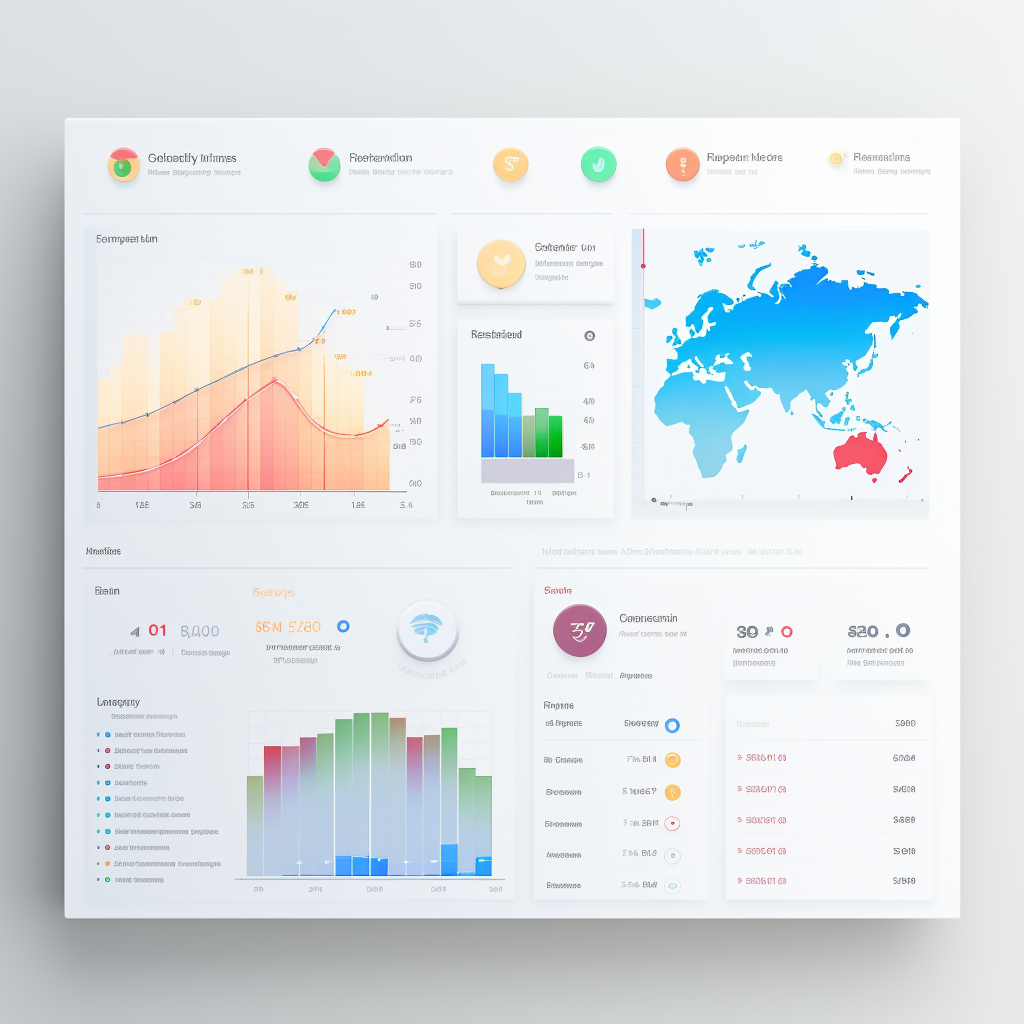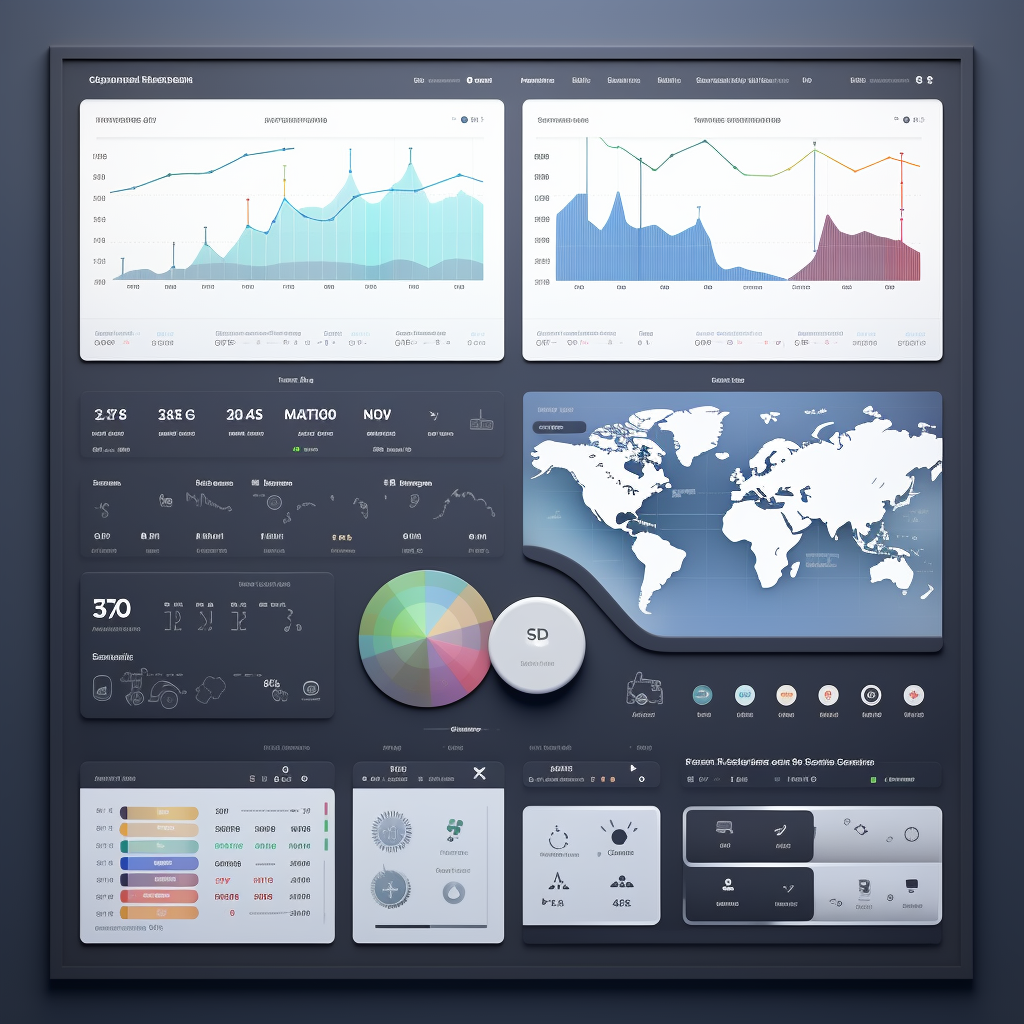Explore the diverse ways bloggers turn their passion into profit. Uncover the secrets of blogging income and learn how bloggers get paid. Blogging is more than just a creative outlet; it’s a realm where passion can seamlessly intertwine with profit. Have you ever wondered how bloggers turn their words, experiences, and insights into a source of income? Well, you’re about to embark on a journey through the fascinating world of blogging income.
In this digital age, the question “How do bloggers get paid?” has several intriguing answers. As we delve into this topic, we’ll uncover the diverse strategies that bloggers employ to transform their dedication and hard work into a stream of earnings. Whether you’re a seasoned blogger looking to expand your revenue streams or a newcomer considering your financial prospects in the blogging universe, this exploration will provide you with valuable insights into the world of blogging income.
So, fasten your seatbelt and get ready to navigate the exciting and rewarding terrain of blogger compensation. We’ll venture into the various methods and avenues that bloggers utilize to reap the fruits of their labor, revealing the secrets behind their financial success. Let’s begin this exhilarating journey through the world of blogging income.
Understanding Blogging Income
Before we dive into the specifics of how bloggers get paid, it’s crucial to understand what blogging income entails. Blogging income encompasses the financial rewards that bloggers earn from their online endeavors. For many, blogging starts as a hobby, a platform to share thoughts, experiences, or expertise. However, with dedication and the right strategies, it can evolve into a lucrative source of income.
The significance of blogging income extends beyond just monetary gains. It signifies the recognition of a blogger’s hard work and the value they bring to their audience. It’s a testament to the power of digital influence and the ability to turn passion into a profession.
One remarkable aspect of blogging income is its diversity. Bloggers have a plethora of income sources at their disposal, making it a dynamic and adaptable field. From traditional methods like advertising to innovative approaches like affiliate marketing and selling digital products, bloggers have the freedom to choose the avenues that align best with their niche and audience.
In the following sections, we’ll dissect these various income sources, providing you with a comprehensive understanding of how bloggers generate revenue. Whether you’re a blogger looking to expand your income streams or someone contemplating the world of blogging, this exploration will shed light on the multifaceted nature of blogging income. So, let’s navigate through the diverse ways bloggers get paid, uncovering the strategies behind their financial success.
How Do Bloggers Get Paid? Display Ads and Native Advertising
In the vast landscape of blogging income, display ads and native advertising are two prominent players. They are the digital billboards and integrated promotions that can be seen throughout the blogging universe, providing bloggers with a substantial source of revenue. Let’s dive into these methods to understand how they work and how bloggers can make the most of them.
Understanding Display Ads
Display ads are the digital banners, images, or videos that you often encounter while scrolling through websites and blogs. They are placed strategically within a blog’s content or on its sidebar, aiming to capture the reader’s attention and, ideally, their click.
These ads are typically provided by advertising networks like Google AdSense, Media.net, or AdThrive. Bloggers sign up for these networks, and once approved, they can display ads on their blog. The key to display ad revenue is pay-per-click (PPC), which means bloggers earn money each time a visitor clicks on an ad.
The World of Native Advertising
Native advertising, on the other hand, takes a more subtle approach. Unlike display ads, native ads blend seamlessly with the blog’s content, mimicking its style and format. They are designed to provide value to the reader while also promoting a product or service.
You’ve likely encountered native ads that look like recommended articles or sponsored posts within a blog. These ads aim to engage the reader, making them more likely to click through and explore the promoted content. Native advertising is often used for content discovery platforms like Taboola and Outbrain.
Monetizing Through Ad Networks
To monetize their blogs with display ads and native advertising, bloggers need to join advertising networks relevant to their niche and audience size. These networks act as intermediaries between bloggers and advertisers, handling the ad placements and revenue tracking.
Optimizing ad revenue involves strategic ad placement within your blog’s content, using responsive ad units that cater to different devices, and experimenting with ad sizes and formats to see what resonates best with your audience.
While display ads and native advertising can be lucrative, they require a balance. Too many ads can overwhelm readers and affect the overall user experience. Bloggers must strike a harmony between monetization and maintaining a pleasant reading environment.
As you continue your blogging journey, remember that the effectiveness of display ads and native advertising can vary based on factors like your niche, audience, and the quality of your content. It’s essential to continuously analyze your ad performance and adapt your strategies to maximize revenue while ensuring a positive user experience.
Passive Income from Affiliate Marketing: A Deep Dive
Affiliate marketing is like the treasure map of the blogging universe, where bloggers can uncover hidden riches by promoting products or services relevant to their niche. It’s a powerful monetization method that has become a cornerstone of income generation for bloggers. In this section, we’ll explore affiliate marketing in-depth and reveal how it can become a lucrative income stream for bloggers.
The Essence of Affiliate Marketing
At its core, affiliate marketing is a partnership between a blogger and a company that sells products or services. The blogger becomes an affiliate by promoting these products or services on their blog. When a reader clicks on an affiliate link and makes a purchase, the blogger earns a commission, usually a percentage of the sale.
The beauty of affiliate marketing lies in its win-win nature. Bloggers can recommend valuable products or services to their audience, helping them make informed choices. Simultaneously, they earn a commission for their recommendations, making it a symbiotic relationship for both parties involved.
How Bloggers Get Started with Affiliate Programs
To venture into affiliate marketing, bloggers need to follow a few key steps:
- Choose a Niche-Related Affiliate Program: Bloggers should identify affiliate programs that align with their blog’s niche. For instance, a travel blogger might partner with affiliate programs related to hotels, travel gear, or booking services.
- Sign Up as an Affiliate: Bloggers need to join the chosen affiliate program. This usually involves filling out an application, which is then reviewed by the program provider. Once accepted, bloggers gain access to unique affiliate links and marketing materials.
- Promote Affiliate Products: After gaining access to affiliate resources, bloggers can start promoting products or services within their content. This can include writing reviews, creating informative articles, or incorporating affiliate links into relevant blog posts.
Tips for Success in Affiliate Marketing
While affiliate marketing offers significant income potential, it’s not a guaranteed goldmine. Success depends on several factors:
- Select Quality Products: Choose affiliate products or services that genuinely provide value to your audience. Promoting subpar offerings can damage your reputation and trust with readers.
- Disclose Affiliate Relationships: Ethical blogging involves transparency. Always disclose your affiliate relationships to your audience. This fosters trust and ensures compliance with legal regulations.
- Create Genuine Recommendations: Authenticity is key. Share personal experiences and insights when recommending affiliate products. Be sincere and provide honest assessments.
- Diversify Your Promotions: Don’t put all your affiliate links in one basket. Diversify your promotions across various blog posts and content types to reach a broader audience.
- Track and Analyze Performance: Most affiliate programs offer tracking tools that enable you to monitor your link clicks, conversions, and earnings. Use this data to refine your strategies and focus on what works best.
- Stay Informed: The affiliate marketing landscape is ever-changing. Stay updated on industry trends and explore new affiliate programs that might align better with your niche or offer higher commissions.
Affiliate marketing is an income source that rewards dedication, authenticity, and a deep understanding of your audience’s needs. By carefully selecting and promoting affiliate products while maintaining trust and transparency, bloggers can unlock a significant revenue stream on their blogging journey.
Sponsored content is like a captivating storyline in the blogging universe, where bloggers collaborate with brands to create engaging and informative content. It’s a monetization method that can be both rewarding and enjoyable when executed strategically. In this section, we’ll delve into the world of sponsored content and uncover the strategies that can help bloggers turn these collaborations into income-generating opportunities.
Sponsored content, often referred to as sponsored posts or brand collaborations, involves partnering with brands or companies to create content that aligns with both the blogger’s niche and the brand’s products or services. These collaborations can take various forms, including blog posts, videos, social media content, and more.
The process typically begins with a brand reaching out to a blogger or vice versa. The brand outlines its campaign goals and objectives, and if the blogger’s audience aligns with these goals, a partnership is formed. The blogger then creates content that features the brand’s offerings while maintaining their unique voice and style.
To embark on a successful sponsored content journey, bloggers should consider the following steps:
- Build a Strong Online Presence: Brands are more likely to collaborate with bloggers who have a substantial and engaged audience. Focus on growing your blog’s readership and social media following.
- Reach Out to Brands: Don’t wait for brands to find you. Proactively reach out to companies that align with your niche and audience. Craft compelling pitches that highlight the value you can bring to their campaigns.
- Negotiation and Pricing: Discuss the terms of the collaboration with the brand, including compensation, content requirements, and deadlines. Negotiation skills are crucial here to ensure you receive fair compensation for your work.
- Content Creation: Create sponsored content that seamlessly integrates the brand’s message or product into your existing content. Maintain transparency by clearly labeling sponsored posts as such to comply with legal regulations and maintain trust with your audience.
- Promote the Content: Once the sponsored content is live, promote it across your blog and social media channels. Encourage audience engagement and interaction with the brand.
Examples of successful sponsored content campaigns are plentiful in the blogging world. Here are a few strategies that have worked for bloggers:
- Storytelling: Weave the brand’s message into a compelling story or narrative that resonates with your audience.
- Tutorials and How-Tos: Create informative content that showcases the brand’s product or service in action.
- Authentic Reviews: Offer honest and unbiased reviews of the brand’s offerings, highlighting both strengths and areas for improvement.
- Giveaways and Contests: Organize giveaways or contests in collaboration with the brand to increase engagement and excitement among your readers.
- Long-Term Partnerships: Building ongoing relationships with brands can lead to a consistent stream of sponsored opportunities.
In the realm of sponsored content, creativity, authenticity, and audience alignment are your guiding stars. By crafting content that provides value to your readers while meeting the brand’s objectives, you can create a win-win situation that not only generates income but also enhances your blog’s reputation and reach.
Product Creation and Sales: Turning Expertise into Profit
Blogging isn’t just about crafting engaging content; it can also be a gateway to creating and selling your digital products. In this section, we’ll explore the exciting world of product creation and sales, where your knowledge, skills, and creativity can become valuable assets that translate into income.
The Digital Product Revolution
Digital products, such as ebooks, online courses, templates, or software tools, have revolutionized the way bloggers and content creators generate income. Unlike physical products, digital goods can be created, distributed, and sold entirely online. This eliminates the need for inventory, shipping, or storage, making it an attractive option for bloggers looking to monetize their expertise.
Crafting Your Digital Masterpiece
The journey of creating a digital product begins with identifying your area of expertise. What knowledge or skills do you possess that can benefit your audience? Once you’ve pinpointed your niche, you can start brainstorming product ideas.
Here are some popular types of digital products bloggers often create:
- Ebooks: Compile your insights, research, or stories into an ebook. Ebooks are a fantastic way to provide in-depth knowledge to your audience.
- Online Courses: Share your expertise through comprehensive online courses. These can include video lessons, quizzes, assignments, and more.
- Templates and Resources: Design templates, checklists, or other resources that can help your audience in their endeavors.
- Software or Tools: If you have programming skills, consider developing software or tools that address a specific problem in your niche.
Effective Product Launch Strategies
Launching a digital product involves more than just creating it. To maximize its success, you need a well-thought-out launch strategy. Here are the key steps to a successful product launch:
- Pre-Launch Buzz: Build anticipation by teasing your product before the official launch. Share sneak peeks, behind-the-scenes content, or even offer a special pre-launch discount to your email subscribers.
- Email Marketing: Utilize your email list to its fullest potential. Send informative and engaging emails about your product, highlighting its benefits and unique features.
- Landing Page: Create a dedicated landing page for your product. This page should include all the necessary information, compelling visuals, and a clear call to action (CTA) for making a purchase.
- Social Media Promotion: Leverage your social media platforms to spread the word. Share visually appealing posts, host live Q&A sessions, and interact with your audience.
- Collaborations and Affiliates: Partner with other bloggers or influencers in your niche for joint promotions. Affiliate marketing can also be a powerful tool in your product’s success.
- Customer Support: Provide exceptional customer support. Respond to inquiries promptly and offer assistance to customers who may encounter issues.
- Feedback and Iteration: After the launch, gather feedback from your customers and use it to improve your product for future iterations.
The Beauty of Passive Income
One of the most enticing aspects of selling digital products is the potential for passive income. Once created and launched, your product can continue to generate revenue without requiring your constant attention. This passive income stream can complement other monetization methods and provide financial stability over time.
As you embark on your journey of product creation and sales, remember that delivering value to your audience is key. Your digital products should genuinely help your readers in their pursuits, and your passion for your niche should shine through in every aspect of your offerings. With dedication and a commitment to quality, you can turn your expertise into a profitable venture.
Membership Sites and Subscription Models: The Path to Recurring Revenue
In the ever-evolving landscape of blogging income, membership sites and subscription models have emerged as compelling options for monetization. These strategies involve providing exclusive content or services to a dedicated audience willing to pay for premium access. Let’s dive into the world of membership sites and subscription models to understand how bloggers are leveraging them for recurring revenue.
Membership Sites
A membership site is a web platform where bloggers offer restricted access to certain content or services in exchange for a recurring fee. These sites typically require visitors to register or subscribe to access the exclusive material. Membership sites can focus on a wide range of niches, from education and fitness to entertainment and community support.
Subscription Models
Subscription models, on the other hand, involve offering recurring content or services to subscribers who pay regular fees. This can include monthly newsletters, premium podcasts, ad-free browsing, or access to a community forum. Unlike membership sites, where access might be restricted to specific areas of a website, subscription models often provide continuous value to subscribers across the entire blog.
Advantages and Challenges
Running a paid membership site or subscription model comes with its unique set of advantages and challenges.
Advantages
- Steady Income: Subscription models provide a predictable and recurring income stream. Bloggers can count on a consistent flow of revenue, making financial planning more manageable.
- Loyal Community: Members or subscribers often form a tight-knit community around your content. This sense of belonging can foster stronger connections and deeper engagement.
- Exclusive Content: Offering premium content or services can incentivize readers to subscribe. They feel they’re getting something extra for their investment.
- Content Freedom: With a steady income from subscriptions, bloggers may have more creative freedom and independence from traditional advertising.
Challenges
- Content Demands: Maintaining high-quality, exclusive content or services can be time-consuming and may require additional resources.
- Balancing Free and Paid: Striking the right balance between free and paid content can be challenging. Bloggers must ensure they continue to attract and engage a broader audience while providing added value to subscribers.
- Member Retention: Keeping subscribers engaged and satisfied is crucial for long-term success. Member churn can affect your recurring revenue.
Successful Bloggers Using This Model
Several successful bloggers have embraced membership sites and subscription models as part of their income strategy. For example:
- Substack: Writers and bloggers use Substack to offer paid newsletter subscriptions. Creators like Casey Newton and Judd Legum have built thriving communities around their newsletters.
- Patreon: Content creators across various niches use Patreon to offer exclusive content to subscribers. Podcasters, artists, and writers find success on this platform.
- Online Courses: Bloggers like Neil Patel offer subscription-based access to premium online courses, allowing subscribers to continually upgrade their digital marketing skills.
- Community Forums: Some bloggers create subscription-based community forums, fostering discussions and networking among members. This model is prevalent in niche industries like finance and tech.
Incorporating membership sites or subscription models into your blog monetization strategy requires a deep understanding of your audience’s needs and a commitment to consistently deliver value. When executed effectively, these models can transform your blog into a sustainable and lucrative venture while fostering a loyal and engaged readership.
Display Ads vs. Native Advertising: Choosing Your Monetization Path
As a blogger looking to monetize your content, you’ll inevitably encounter the choice between two prominent revenue streams: display ads and native advertising. Each method comes with its distinct characteristics, advantages, and drawbacks. Let’s delve into the world of display ads and native advertising to help you decide which path aligns best with your blogging goals.
Understanding Display Ads
Display ads are a familiar sight on websites, typically presented as banner or sidebar ads, interstitials, or in-content placements. These ads aim to capture visitors’ attention and prompt them to click through to the advertiser’s website. Display ad networks, such as Google AdSense or Media.net, often facilitate the placement of these ads on your blog.
Pros of Display Ads:
- Ease of Implementation: Display ads are relatively easy to set up on your blog. Many ad networks provide straightforward integration instructions.
- Passive Income: Once implemented, display ads can generate income without much ongoing effort. You earn money when readers click on or view the ads.
- Ad Network Support: Ad networks typically offer support and tools for optimizing your ad placements and revenue.
Cons of Display Ads:
- Ad Space Consumption: Display ads can clutter your blog’s design and distract readers, potentially affecting the user experience.
- Earnings Per Click (EPC): The earnings per click (EPC) for display ads can vary significantly, and not all clicks result in substantial revenue.
- Ad Blockers: Some users employ ad blockers, which can reduce the visibility and effectiveness of display ads.
Decoding Native Advertising
Native advertising, on the other hand, seamlessly blends into your blog’s content. These ads mimic the format, style, and tone of your regular articles or posts. They often include subtle calls to action or links that lead readers to the advertiser’s product or service. Native advertising can take the form of sponsored articles, product placements, or integrated content.
Pros of Native Advertising:
- Integration with Content: Native ads harmonize with your blog’s content, making them less intrusive and more engaging for readers.
- Engagement and Trust: Well-executed native ads can resonate with your audience, fostering trust and interest in the advertised products or services.
- Higher Earnings Potential: Native advertising often offers higher earnings per click (EPC) compared to traditional display ads.
Cons of Native Advertising:
- Disclosure and Transparency: Ethical concerns arise when not clearly disclosing that content is sponsored. Maintaining transparency is essential.
- Content Alignment: Native ads should align with your niche and readers’ interests. Irrelevant or poorly matched ads may deter readers.
- Creation Effort: Crafting native ad content may require more effort and collaboration with advertisers to ensure it seamlessly integrates with your blog’s style.
Choosing Your Monetization Strategy
The decision between display ads and native advertising hinges on your blog’s niche, audience, and goals.
- Consider Display Ads If:
- Your blog caters to a broad audience, and you prefer a passive income stream.
- You have ample ad space and don’t mind integrating display ads without disrupting your content flow.
- Your primary goal is to increase overall revenue from your blog.
- Consider Native Advertising If:
- You prioritize user experience and wish to maintain a cohesive and uncluttered blog layout.
- Your audience appreciates informative, well-crafted content and is likely to engage with native ads.
- You aim to build trust and credibility with your readers while maximizing your earnings per click.
Ultimately, the choice between display ads and native advertising should align with your content strategy and reader preferences. Some bloggers even employ a combination of both methods to diversify their revenue streams. Whichever path you choose, remember that transparency, relevance, and user experience remain paramount in cultivating a thriving blog while monetizing it effectively.
Selling Digital Products and Services: Monetizing Your Expertise
In the ever-evolving blogging landscape, bloggers are not just content creators but also entrepreneurs. One potent avenue to monetize your blog is by selling digital products and services. This approach lets you leverage your expertise, insights, and creativity to create valuable assets for your audience, while also generating income. In this section, we’ll explore the ins and outs of selling digital products and services, from conception to execution.
The Steps to Creating and Selling Digital Products
Step 1: Identify Your Expertise and Audience Needs
Begin by identifying your areas of expertise and understanding your audience’s needs. What valuable knowledge or skills can you share? What problems can you solve for your readers? Your digital product should align with both your strengths and your audience’s desires.
Step 2: Product Ideation and Creation
With a clear understanding of your niche and audience, brainstorm digital product ideas. These can range from ebooks, online courses, templates, printables, to software tools or digital artwork. Choose a product that resonates with your audience and suits your capabilities.
Step 3: Content Development
Create high-quality content for your digital product. Invest time in research, writing, design, or development to ensure your product offers real value. Engage your audience during the creation process by seeking feedback or conducting surveys to tailor your product to their preferences.
Step 4: Pricing Strategy
Determine the pricing strategy for your digital product. Consider factors like production costs, market demand, competitor pricing, and the perceived value of your offering. Pricing can significantly impact your sales volume and revenue.
Step 5: Sales and Distribution
Decide how you’ll distribute and sell your digital product. Options include selling it directly through your blog, using third-party platforms like Gumroad or Teachable, or even offering it through online marketplaces like Amazon or Etsy. Ensure the sales process is user-friendly and secure.
Step 6: Marketing and Promotion
Promote your digital product to your blog audience and beyond. Utilize your blog, email marketing, social media, and other digital marketing tactics to create awareness and generate interest. Highlight the benefits and value your product provides.
Step 7: Customer Support and Feedback
Offer excellent customer support to address inquiries and issues promptly. Encourage customers to provide feedback and reviews, which can enhance your product’s credibility and help you make improvements.
Exploring Different Types of Digital Products
Digital products come in various formats, allowing you to choose one that aligns with your expertise and audience preferences:
- Ebooks: Share your knowledge, stories, or insights in written form. Ebooks can cover a wide range of topics, from guides and how-tos to fiction and non-fiction.
- Online Courses: Teach specific skills or offer in-depth courses on topics relevant to your niche. Online courses often include video lessons, quizzes, and assignments.
- Templates and Printables: Provide customizable templates or printables that help your audience with tasks like meal planning, budgeting, or organizing.
- Software and Apps: Develop software tools or mobile apps that cater to your niche’s needs. These can range from productivity tools to niche-specific software.
- Digital Art and Media: If you’re artistically inclined, you can sell digital artwork, graphics, music, or photography.
Success Stories in Selling Digital Products
Many bloggers have turned their expertise and passion into profitable digital products. For instance, a cooking blogger might sell an ebook of their best recipes, a fitness blogger could offer an online fitness course, or a graphic design blogger might sell templates and graphics.
One standout success story is that of Pat Flynn from Smart Passive Income. He created and sold an online course called “Smart From Scratch,” helping aspiring entrepreneurs launch their online businesses. The course generated significant revenue and helped his audience achieve their goals.
Selling digital products and services not only diversifies your income streams but also positions you as an authority in your niche. It’s a powerful way to share your knowledge, make a meaningful impact on your audience, and, of course, boost your blogging income.
Challenges and Pitfalls in Blogging Income: Navigating the Roadblocks
As you embark on your blogging journey to earn a meaningful income, it’s essential to be aware of the challenges and pitfalls that often lie along the path. While blogging offers incredible opportunities, it’s not without its share of roadblocks. In this section, we’ll delve into the common challenges that bloggers face when striving to generate income and provide valuable insights on how to overcome them.
The Uphill Battle of Building an Audience
One of the initial challenges bloggers encounter is building a dedicated and engaged readership. In the vast online landscape, getting noticed can be akin to trying to stand out in a bustling market square. Here’s how to overcome this hurdle:
- Solution: Be patient and persistent. Building an audience takes time. Focus on creating high-quality, valuable content that resonates with your target audience. Engage with your readers through comments and social media. Consistency and authenticity in your blogging efforts will gradually attract a loyal following.
Content Creation Burnout
Maintaining a consistent content schedule can lead to burnout. The pressure to churn out posts regularly can sap your creativity and enthusiasm. How can you avoid this common pitfall?
- Solution: Prioritize quality over quantity. It’s better to publish fewer posts that are well-researched, informative, and engaging than to sacrifice quality for quantity. Consider establishing an editorial calendar to plan your content strategically and prevent last-minute rushes.
Fluctuations in Income
Blogging income is rarely steady. It can vary from month to month, depending on factors like traffic, ad rates, and affiliate sales. This unpredictability can be challenging for those seeking financial stability.
- Solution: Create a financial buffer by saving during high-earning months to cover potential dips. Diversify your income streams to reduce reliance on a single source. Additionally, focus on growing your audience and optimizing your monetization methods to mitigate fluctuations.
Competition and Saturation
The blogosphere is a crowded place, with countless blogs vying for attention. It can be disheartening to feel overshadowed by established blogs in your niche.
- Solution: Differentiate yourself by finding your unique voice and perspective. Offer fresh, valuable insights in your niche. Collaborate with other bloggers, and don’t view them as competitors but as potential allies. Networking can open doors to new opportunities and help you stand out.
Staying Motivated in the Long Run
Blogging is a marathon, not a sprint. Many bloggers face burnout or lose motivation over time.
- Solution: Set realistic goals and milestones for your blog. Celebrate your achievements along the way to stay motivated. Remember why you started blogging in the first place, whether it’s a passion for a niche or a desire to share knowledge. Surround yourself with a supportive community of fellow bloggers who can provide encouragement during challenging times.
Lessons from Experienced Bloggers
To provide valuable insights, we reached out to experienced bloggers who have navigated these challenges successfully. Here are some of their lessons learned:
- Consistency Pays Off: “Consistency in content creation and engagement is key. It may take months or even years, but staying consistent can lead to substantial growth.”
- Adapt to Change: “The digital landscape evolves rapidly. Be open to learning and adapting to new trends, technologies, and strategies.”
- Diversify Income Streams: “Don’t rely solely on one income source. Diversifying your revenue streams can provide stability and growth opportunities.”
- Community Matters: “Build a community around your blog. Engage with your audience, respond to comments, and foster connections with fellow bloggers. A supportive network can be a source of motivation and collaboration.”
In conclusion, while blogging for income can be a rewarding endeavor, it’s not without its challenges. Building an audience, maintaining content quality, managing income fluctuations, and staying motivated are hurdles that bloggers commonly face. By approaching these challenges with perseverance, strategic planning, and a supportive network, you can overcome the pitfalls and continue on your path to successful blogging. Remember that every challenge is an opportunity for growth and learning in your blogging journey.
Diversification of Income Streams: Strengthening Your Blog’s Financial Foundation
Imagine your blog’s income as a thriving garden. Just as a diverse garden with various plants is more resilient to pests or drought, diversifying your blog’s income sources can make your earnings more robust and resilient. In this section, we’ll explore the concept of diversification and why it’s crucial for building a solid financial foundation for your blog.
The Benefits of Diversification
Diversifying your blog’s income streams offers several compelling advantages:
- Risk Mitigation: Relying solely on one income source can be risky. If that source falters or experiences fluctuations, your earnings could plummet. Diversification spreads this risk, reducing your vulnerability to sudden income drops.
- Income Stability: Different income streams may not all peak or dip at the same time. By diversifying, you can maintain a steadier income throughout the year, even during seasonal or trend-driven fluctuations.
- Exploration of Opportunities: Diversification encourages you to explore new income opportunities. It opens doors to various monetization methods, allowing you to tap into what works best for your blog and audience.
- Income Growth: As you add more income streams, your overall earnings potential increases. Multiple sources can contribute to a more substantial and sustainable income.
The Risks of Single-Source Dependency
Imagine a tree with a single root: if that root fails, the entire tree is at risk. Similarly, relying on a single monetization method can put your blog’s financial stability in jeopardy:
- Income Volatility: Depending on one source, such as display ads, means that your income is subject to fluctuations in ad rates or traffic. Any adverse changes can directly impact your earnings.
- Market Changes: The digital landscape is dynamic. Algorithms change, advertisers come and go, and consumer behavior evolves. A shift in your primary income source’s market can disrupt your revenue.
- Stagnation: Relying on one method may limit your income potential. Exploring different avenues can lead to new opportunities for growth and innovation.
Recommendations for a Resilient Income Model
To create a resilient income model for your blog, consider these recommendations:
- Diversify Strategically: Identify income sources that align with your blog’s niche and audience. Look for opportunities that complement your existing monetization methods.
- Balance Income Streams: Aim for a balance among your income sources. Diversify across display ads, affiliate marketing, sponsored content, product sales, and other viable methods.
- Monitor Performance: Keep a close eye on the performance of each income stream. Regularly analyze metrics and adjust your strategies based on what’s working best.
- Stay Informed: Stay updated on industry trends, emerging monetization methods, and changes in your niche. Being proactive can help you spot new income opportunities.
- Experiment and Innovate: Don’t be afraid to experiment with new income streams or content formats. Innovation can lead to exciting income prospects.
- Plan for Contingencies: Have a contingency plan in case one income stream faces challenges. This could involve temporarily shifting focus or exploring backup income sources.
In essence, diversification of income streams is akin to planting a varied garden of financial opportunities for your blog. By spreading the risk, harnessing different revenue sources, and staying adaptable, you can cultivate a resilient and thriving income model that ensures the long-term success of your blogging journey.
Conclusion: Navigating the Blogging Income Odyssey
Congratulations, intrepid blogger! You’ve embarked on a journey through the intricate terrain of blogging income, and now it’s time to chart your course confidently. Let’s recap the insights and wisdom you’ve gathered on this voyage and set you on a course toward blogging success.
Exploring the Income Cosmos
Throughout this odyssey, we’ve delved into the vast cosmos of blogging income, uncovering numerous pathways to financial fulfillment. From display ads and affiliate marketing to sponsored content, product creation, and subscription models, you’ve witnessed the diverse opportunities that await in the blogosphere. Your blog is a celestial ship, and these income sources are the stars guiding you toward your financial goals.
Strategies for Success
You’ve discovered the importance of audience engagement and loyalty, recognizing that an engaged readership is the wind in your blogging sails, propelling you toward greater income. Quality content and niche relevance have become your navigational tools, guiding you through the ever-changing currents of the blogging universe.
Navigating the Challenges
Yet, this odyssey has not been without its challenges. You’ve learned to steer through seasonal fluctuations, harnessing trending topics to maximize your earnings during peak periods. Diversifying your income streams has become a shield against the turbulent winds of uncertainty, ensuring a resilient and profitable blogging voyage.
Chart Your Course
In closing, as you navigate the seas of blogging income, chart your course with purpose and dedication. Continue to explore the celestial bodies of opportunity, nurture your audience, and uphold the legal and ethical standards that define a responsible blogger. Your journey may have started with a single blog post, but it has the potential to lead to a constellation of success.
So, fellow blogger, set your course, adjust your sails, and embrace the odyssey of blogging income with enthusiasm. As you journey through this captivating universe, may your efforts yield not only financial prosperity but also the fulfillment that comes from sharing your passion with the world. Happy blogging, and may your star always shine bright in the blogosphere.
Related Articles You Might Find Interesting:
- How to Write a Blog for Money
- How do bloggers get paid?
- Can you make $1,000 a month with a blog?
- How much money is a 1000 views on a blog?
- How to make $500 dollars a month blogging?
- How long does it take to make $1000 per month blogging?
- How to earn $10,000 per month from blogging?
- Do beginner bloggers make money?
- How much do beginner bloggers make?






















































































